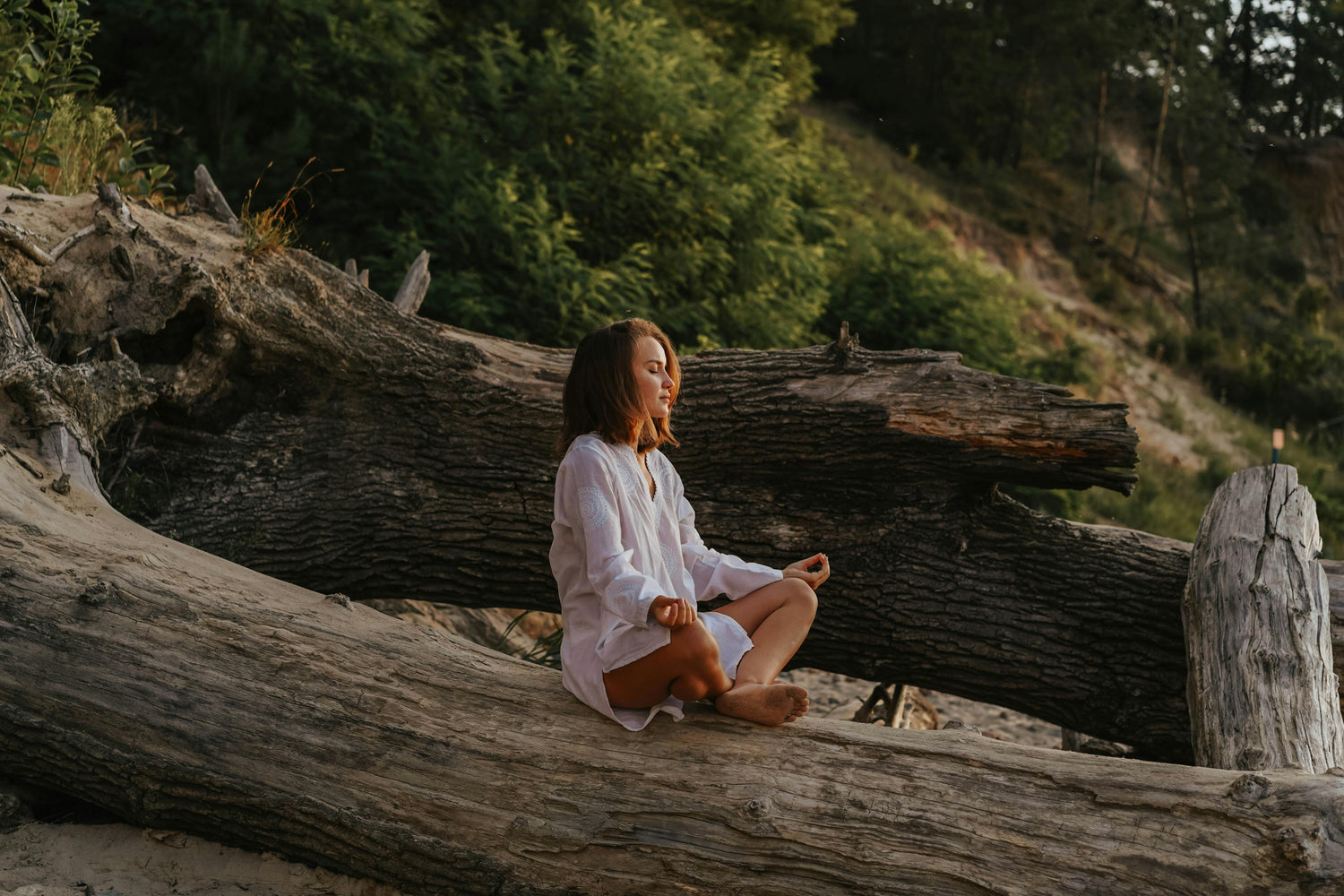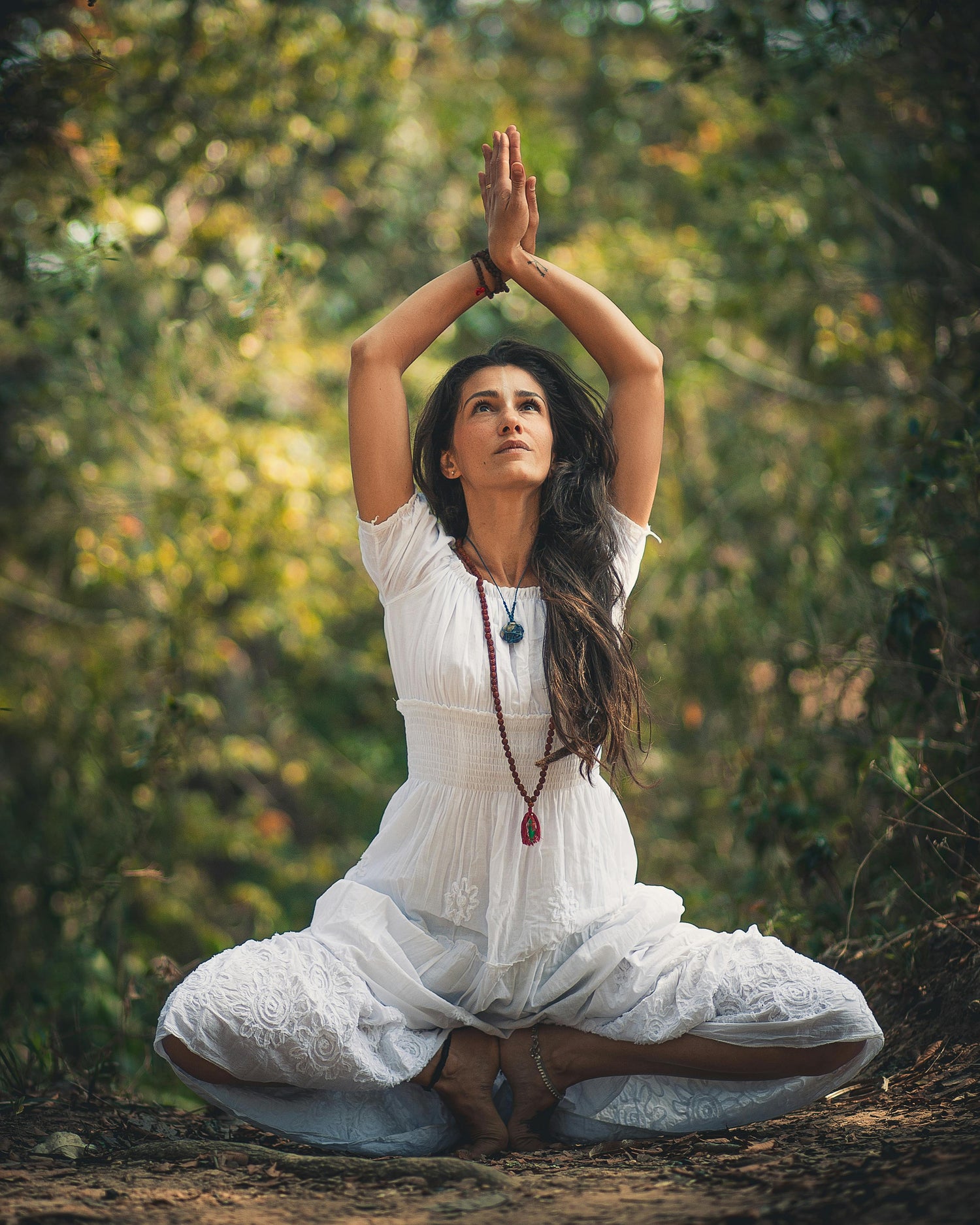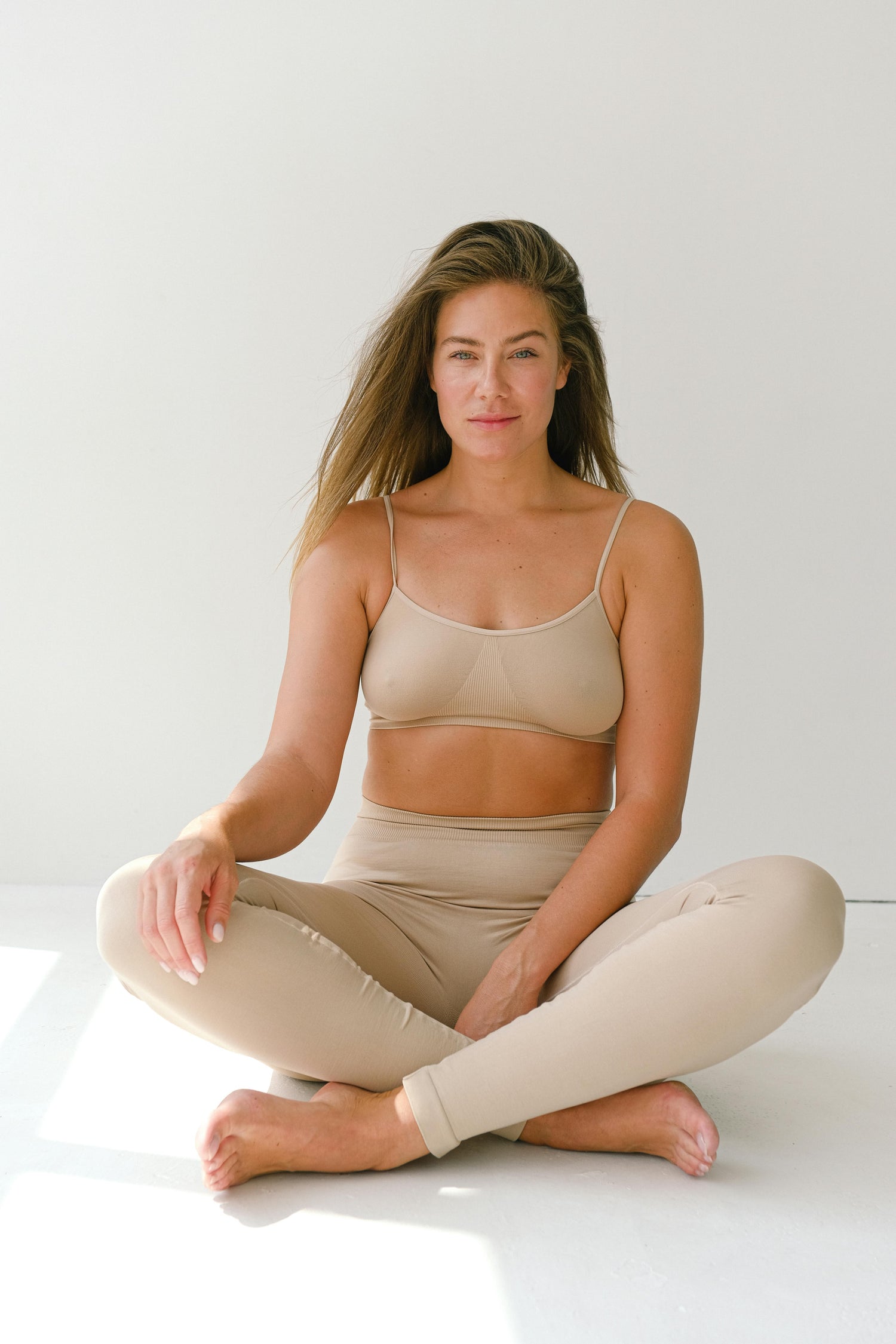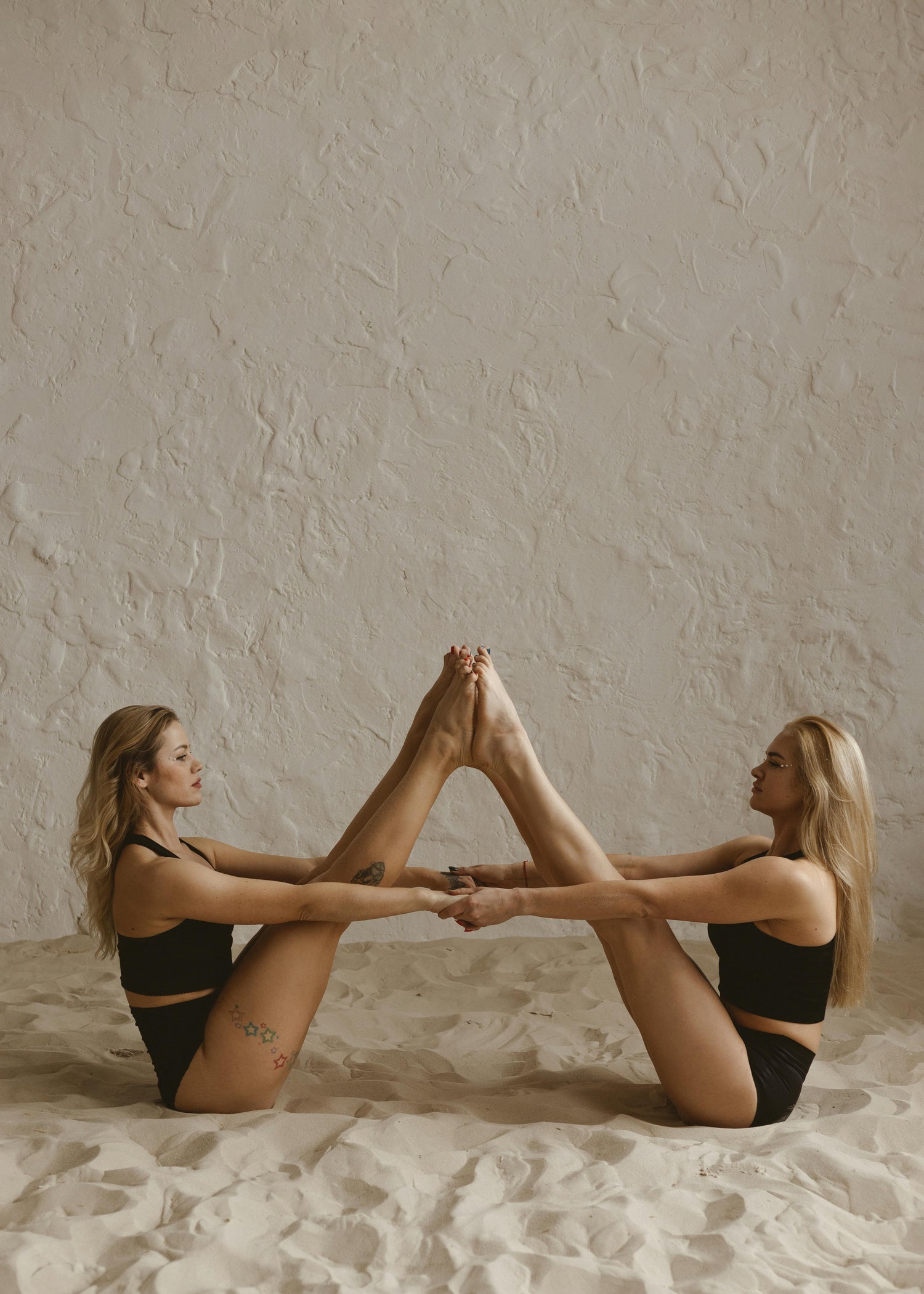YOGA: THE 6 QUESTIONS EVERYONE ASKED!
Are you new to yoga or wondering about its benefits?
In this post, we will answer the 6 most asked questions on Google about yoga, its postures, philosophy and its effects on the body and mind .
Whether you are curious, skeptical, or in search of an aligned practice, discover clear and caring answers , inspired by years of knowledge transmission, by thousands of mats that we have delivered to you, and by the links forged with you, in the name of Yogaterrae.
Written by TINA - May 2025
Collapsible content
Reading time
About 10 minutes
WHAT YOU ARE ABOUT TO DISCOVER
• What is yoga?
• What are the benefits of yoga?
• Do I need to be flexible to practice yoga?
• What style of yoga is right for me?
• Can yoga help with weight loss?
• How often should I practice yoga to feel the benefits?
"Let's take a look"!

A CLEAR AND ACCESSIBLE DEFINITION OF WHAT YOGA REALLY IS TODAY
Beyond simple physical activity, yoga is an ancient discipline that aims to harmonize the body, breath, and mind. Practiced for over 5,000 years in India, yoga is based on philosophical, spiritual, and physical foundations. It is not limited to the execution of postures (asanas), but also includes breathing exercises (pranayama) , concentration (dharana), and meditation (dhyana). Its deep purpose is to awaken a finer awareness of oneself and the world, cultivating inner peace.
In modern life, yoga has adapted to all rhythms and all profiles. It can be found in gyms, specialized studios, or at home, on your yoga mat , with a gentle or intense practice depending on your desires. For some, it is a moment to stretch and breathe better; for others, it is a path of inner transformation . From soothing Hatha Yoga to fluid Vinyasa, including Yin, Ashtanga or Kundalini, each approach offers a unique link between movement, breath and presence .
Yoga is now recognized worldwide as a powerful tool for stress management , posture improvement , prevention of musculoskeletal disorders and personal development. Practiced consistently, it becomes a space for refocusing and recharging, accessible to all, regardless of age, physical condition or beliefs.

THE MULTIPLE BENEFITS OF YOGA ON THE BODY, MIND AND EMOTIONS
The benefits of yoga are physical, mental, and emotional . It is no coincidence that millions of people around the world practice it today, sometimes daily. Yoga acts as a gentle, preventative medicine , accessible to all, which promotes the overall balance of body and mind.
On a physical level, regular practice improves flexibility , deep muscle strength , posture , and joint mobility . It strengthens stabilizing muscles, releases tension in the back, shoulders, or hips, and stimulates internal organs. Simple postures like downward dog or child's pose promote both stretching and recovery. On the yoga mat , the body finds a space of alignment and fluidity .
On the mental side, conscious breathing exercises (pranayama) and moments of mindfulness improve concentration, calm the mind, and reduce anxiety. Yoga helps you get out of “autopilot” mode and return to the moment, fully listening to yourself. Numerous studies show that yoga can reduce cortisol levels (the stress hormone), improve sleep quality, and help with emotional disturbances.
From an emotional point of view, yoga opens a space of inner welcome , allowing one to better manage emotions, cultivate self-acceptance, patience and kindness. By linking movement, breathing and silence, it becomes a true path back to the essential .
Finally, beyond the measurable benefits, many practitioners speak of a subtle transformation : better grounding, a more peaceful relationship with the body, and a clearer vision of their deepest needs.

WHY FLEXIBILITY IS NOT A PREREQUISITE, BUT A PATH
It's one of the most persistent misconceptions: you have to be flexible to practice yoga. In reality, yoga doesn't require any prerequisites , neither flexibility, nor endurance, nor appearance. It's a progressive practice , accessible to everyone, regardless of their level or age.
Flexibility is not a starting point; it is sometimes a side effect of the practice. What yoga offers above all is to listen to your body , to work consciously , and to respect your own limits . Some very flexible people may lack stability or tone, while others, less flexible, quickly gain mobility and balance.
A good teacher will always be able to offer accessible variations , with accessories such as blocks or straps, to allow everyone to adopt a posture according to their morphology. It is therefore not the final form of the posture that counts, but the quality of presence , personal alignment , and bodily sensation.
Take the example of the pinch pose (Paschimottanasana). It is not necessary to touch your feet to reap the benefits. Even by leaning slightly forward, the student can feel a proper, deep, and restorative stretch .
Yoga teaches us that patience and consistency are worth more than performance. It invites us to let go of comparisons , to accept what is, and to move at our own pace, gently. In this sense, the practice becomes a tool for self-knowledge , more than a physical challenge.
In short, flexibility is neither a goal nor a prerequisite. It comes—or not—with time. But true yoga begins as soon as you lie down on the mat , with sincerity, presence, and curiosity.

HOW TO CHOOSE THE STYLE OF YOGA THAT SUITS YOUR NEEDS, YOUR LIFESTYLE AND YOUR DESIRES
Faced with the wealth of practices available today, it is natural to feel a little lost. Hatha, Vinyasa, Yin, Kundalini, Ashtanga… each style of yoga has its own energy , rhythm and intentions . The idea is not to choose “the best”, but the one that resonates most with your moment in life , your body and your needs of the day.
Are you looking to slow down, deeply relax, and restore your physical and mental resources? Yin Yoga could be your ally. It is practiced on the floor, in stillness, and promotes fascial relaxation and deep relaxation.
Do you enjoy fluid movement, body warmth, and a rhythmic practice that connects breathing and postures? Try Vinyasa , which links postures in a dynamic flow , perfect for toning and circulating energy.
If you're just starting out or want to explore a gentler, slower approach with a focus on alignment and breathing, Hatha Yoga is a great foundation. It's suitable for everyone, regardless of age or fitness level.
Looking for a more spiritual and introspective practice? Kundalini Yoga , with its mantras, kriyas, and powerful breathing, explores energetic and meditative dimensions.
And for those who enjoy structured routines, rigor, and physical intensity, Ashtanga Yoga offers codified series that strengthen endurance and discipline.
Finally, some days you may need one… and the next day, the opposite. It is healthy and beneficial to explore , listen to your feelings and alternate styles. Good yoga is the one that accompanies you without constraining you , that adapts to your needs, your mood, your vitality of the day.
Yoga isn't a box to tick. It's a flexible, living path that evolves with you. And sometimes the right style is the one you haven't tried yet.

WHAT SCIENCE SAYS ABOUT YOGA AND WEIGHT LOSS
The answer is yes , but not necessarily in the way you'd expect. Yoga isn't a high-intensity calorie-burning sport like HIIT or running, but it does work deep down, on several levers essential for sustainable, healthy weight loss .
First, some styles like Vinyasa Yoga , Power Yoga or Ashtanga generate real muscular, cardiovascular and energetic work. During a dynamic session, you sweat, you engage your deep muscles, you improve your posture, and above all, you activate your metabolism . In this way, these styles can effectively support a weight loss or fitness goal.
But beyond the physical aspect, yoga acts on emotional balance . It regulates the nervous system, reduces stress (often the cause of compulsive eating), and rebalances the relationship with the body . Through practices such as pranayama (breath control) or meditation , it soothes mental tensions, and allows us to escape the “stress – compensation – guilt” cycle.
Yoga also encourages a more conscious approach to eating . By being more in tune with your inner sensations, you eat differently: more slowly, more presently, and often by naturally adjusting the quantities. It's not a diet, but an awareness of the link between what you eat and how you feel.
Finally, practicing yoga regularly allows you to reconnect with the pleasure of movement , without pressure or competition. This creates a virtuous dynamic: more energy, more vitality, more self-respect... and therefore, often, a natural rebalancing of weight.
Losing weight with yoga isn't about imposing a constraint on yourself. It's about finding a sense of grounding, coherence, and inner stability that gently transforms your lifestyle.

HOW OFTEN TO PRACTICE TO EXPERIENCE DEEP AND LASTING EFFECTS
You don't need to practice for hours every day to feel the effects of yoga. What matters is consistency . Even 2 to 3 sessions per week , lasting 20 to 45 minutes, can profoundly transform your relationship with your body, stress, and energy. Yoga acts as a gentle but constant imprint on the nervous, muscular, and emotional systems.
The first visible benefits are often improved sleep , better breathing , more flexibility and greater mental stability . In the medium term, the practice becomes an anchor , a benchmark in the week, which structures the days and fuels a more conscious lifestyle.
Many practitioners also choose a short daily practice, such as a morning sun salutation or evening pranayama, to establish a beneficial ritual without pressure. The idea is not to “do more,” but to practice with presence .
Ultimately, the right frequency is one that respects your lifestyle , your needs, and your pleasure. A mat rolled out regularly and with joy is better than a rigid and exhausting routine. Yoga does not judge quantity, but cultivates the quality of attention we pay to ourselves.
Thank you TINA for this post
Thank you for your curiosity and your desire to better understand yoga. May each question be a door to greater clarity, well-being... and self-awareness.
TINA's Bio
-

TINA
1994, Reunion Island & Mauritius, a Life driven by the Indian Ocean and Yoga
Since childhood, this intrepid traveler has traveled the globe, leaving her footprints on beaches around the world.Passionate about surfing, scuba diving and sailing, she has made the oceans her playground and source of inspiration.
The freedom of the waves, the serenity of the ocean depths and the wind in his sails have punctuated his journey, always guided by a quest for connection with nature.
It was through her explorations that yoga became more than a practice for her – it was a way of life.
Between early morning surf sessions and meditative sunsets, she found in yoga a perfect balance of strength, flow and self-awareness.
Today, she combines her passion for water sports with teaching yoga and is part of the Yogaterrae team, here in France, in the South West and often remotely :)
This adventurer is a true source of inspiration for anyone who aspires to live in harmony with their body and nature.
Through her stories of incredible experiences, she invites everyone to open up to a world where every wave, every breath and every posture is a celebration of life.



